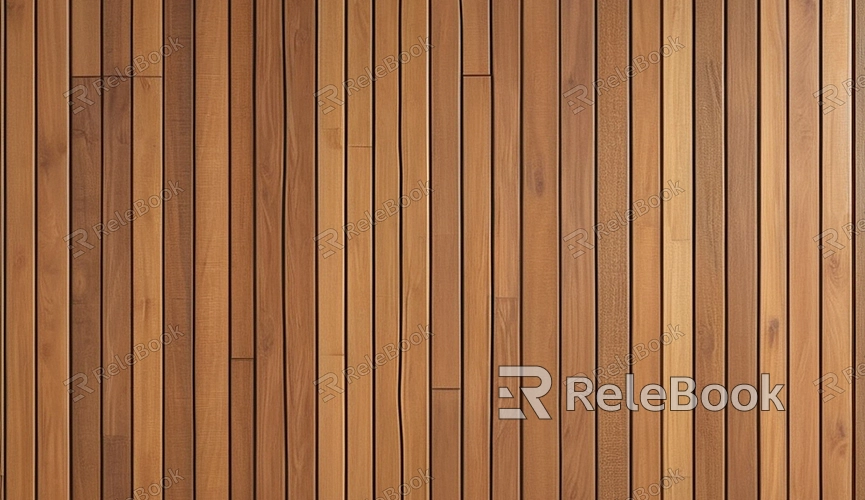Wood Veneer Texture in Blender
What is Wood Veneer? Wood veneer is a design element used to simulate the texture and feel of natural wood surfaces. In Blender, special textures can be utilized to create realistic wood effects, adding a natural appearance to 3D models.
These 3D texture resources, downloadable from Relebook, can be applied in Blender as follows:
1. Texture Import: Import wood veneer texture materials into the Blender project.
2. Application to Models: Apply the texture to the surfaces of the model, ensuring the model is prepared to accept textures.
3. Mapping Adjustment: Adjust texture mapping based on the size and shape of the model to achieve a natural effect on the model's surface.
4. Material Parameter Adjustment: Adjust the parameters of the wood material, such as color, glossiness, etc., to achieve the desired wood veneer effect.
5. Detail Addition: Add extra details such as the depth of wood grain, texture, etc., to enhance the model's realism and aesthetics.

Different parameter adjustments yield different rendering effects. Here are some common rendering applications of this 3D texture in Blender:
1. Furniture Design: Suitable for simulating wood grain effects on furniture surfaces, such as tables, chairs, cabinets, etc., creating a warm and natural home environment.
2. Interior Decoration: Used to simulate wood grain effects on indoor walls or floors, adding a natural and comfortable atmosphere to indoor spaces.
3. Architectural Facades: Suitable for simulating wood surfaces on building exteriors or doors and windows, adding a rustic charm to the architecture.
4. Game Scene Design: Applied in modeling and rendering game scenes, adding realism and detail to virtual world buildings and environments.
5. Product Design: Used to simulate the appearance of wooden products, such as wooden toys, crafts, etc., giving products a natural and rustic style.
In Blender, we're not dealing with physical materials, but by using high-resolution texture images and material settings, we can effectively reproduce the look and feel of raw veneer. Here are several key roles of raw veneer in Blender:
Enhanced Realism: By applying high-quality wood grain textures, 3D models can appear more realistic and have a wooden texture. This is particularly important for interior design, architectural visualization, and any projects requiring a wooden appearance.
Increased Detail Level: Using raw veneer textures can add subtle details to the model surface, such as wood grain texture, color variations, and natural defects. These details are crucial for close-up rendering and high-quality visual effects.
Time and Resource Saving: Simulating raw veneer textures in Blender, rather than modeling every wood detail from scratch, can save a significant amount of time and computational resources. Using texture mapping is an efficient way to quickly create complex wood effects without sacrificing visual quality.
Flexibility and Control: By adjusting texture mapping, UV unwrapping, and material nodes, users can precisely control the appearance of raw veneer, including its color, glossiness, reflectivity, etc., to adapt to different design requirements and creative visions.
Enhanced Overall Scene Aesthetics: Appropriately using wood textures, such as raw veneer, in 3D scenes can add warmth and naturalness to the scene, adding more depth and appeal to visual works.
The flexible application of wood veneer textures in Blender provides a diverse range of options for 3D model design. By adjusting parameters and applying textures appropriately, various unique wood grain effects can be added to model rendering, not only enhancing the visual appeal of the models but also creating a more natural and comfortable environment for designers. If you need high-quality 3D textures and HDR images, or 3D model downloads, they are available for download from Relebook. After downloading, simply import the textures and 3D models into your project for immediate use.

